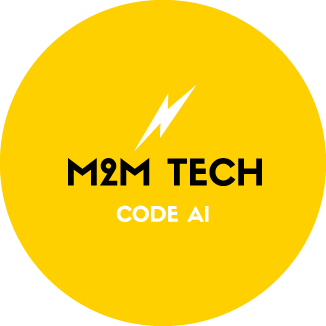As the world has explored and developed many forms of renewable energy, this sector has carved its own niche and contributed to our increasing global energy demand. However, there are still many potential avenues to harness renewable energy to our advantage. One potential contender is wave energy from the oceans, which always exists in coastal countries and can be extracted from some of our most advanced technologies today.
What is Wave Energy and How Do We Capture It?
On a fundamental level, wave energy captures the kinetic and potential energy from the ocean and converts it into electricity. Similarly to solar, hydroelectric or wind energy, it utilizes Earth's natural resources to serve different energy needs. Gathering this energy involves a variety of novel methods:
Point Absorber Buoys: These floating structures bob up and down with the waves, and this motion is used to drive generators. This vertical motion converts wave impact into usable energy.
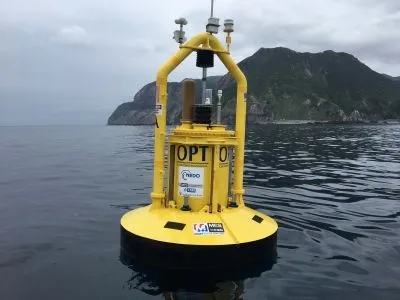
Oscillating Water Columns (OWCs): These hollow structures have a wall in front and an opening below the waterline. As waves enter the chamber, they compress the air above the water column through a turbine to generate electricity.
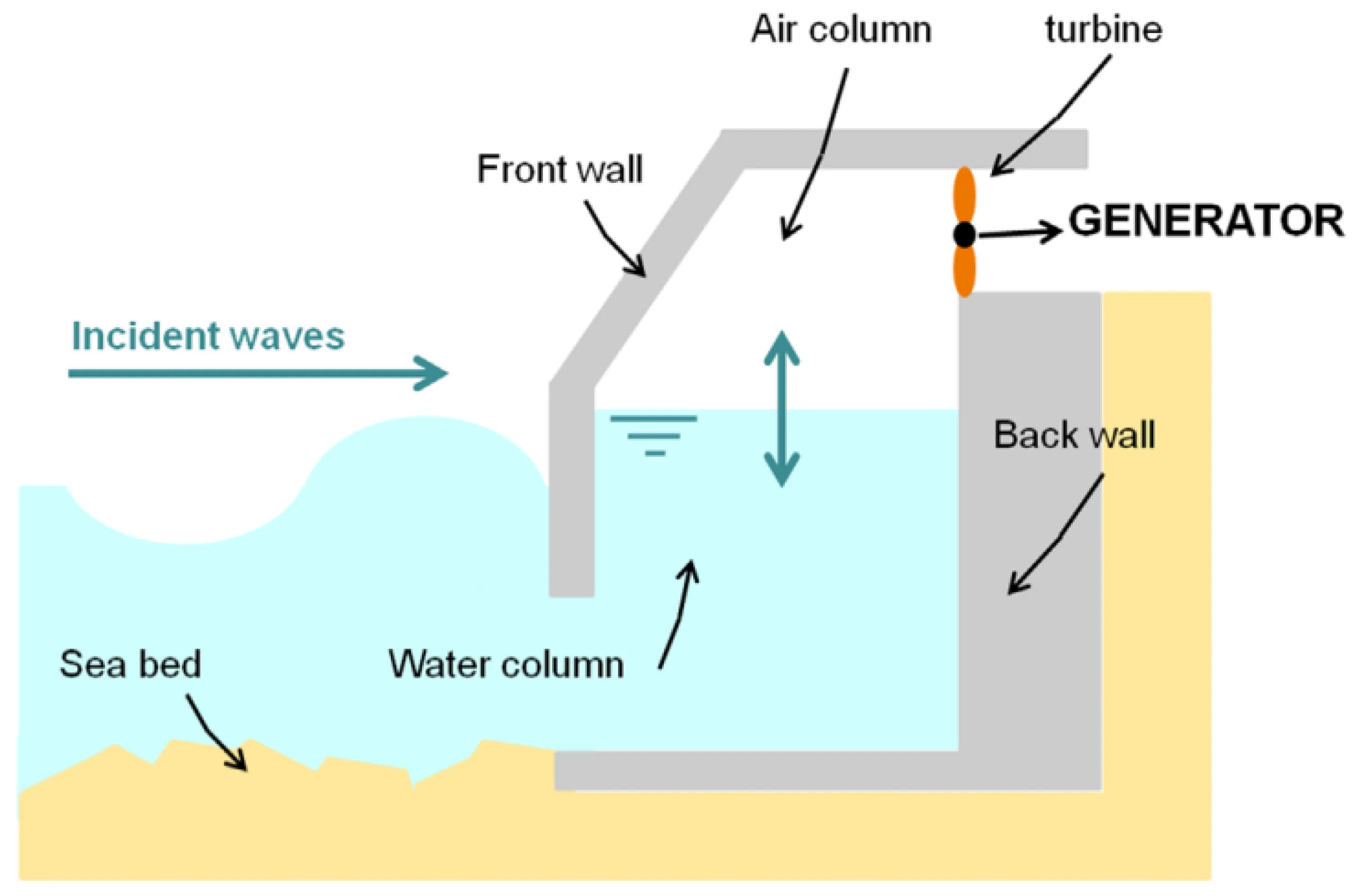
Overtopping Devices: These structures, often resembling ramps, capture waves that “overtop” into a reservoir at a higher elevation. The stored water is then released through turbines, much like a conventional hydroelectric dam.

Attenuators: Long, floating structures that absorb wave energy by moving up and down along the wave direction. They convert mechanical energy from waves into electricity.
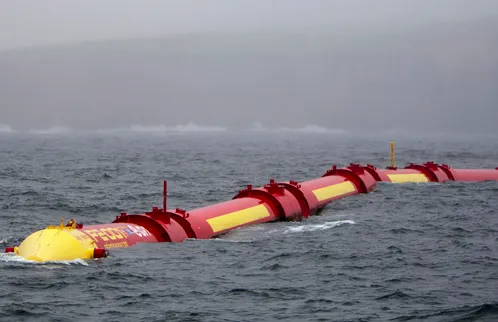
A Brief History and Current Developments
Given waves are always around coasts regardless of geography, the intuitive idea of harnessing wave power has existed for centuries. Early patents date back to the late 18th century, but interest renewed in the 1970s through the “Salter's Duck,” a wave energy converter device developed by Stephen Salter. This paved the way for modern wave energy research until today where its potential is significant. The Intergovernmental Panel on Climate Change (IPCC) estimates the global theoretical wave energy potential to be around 29,500 terawatt-hours per year (TWh/yr), a figure that far exceeds current global electricity consumption. The International Energy Agency (IEA) projects that wave and tidal energy could contribute 300 GW to global electricity supply by 2050.
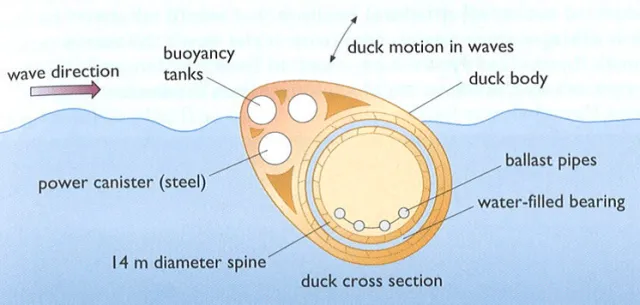
Challenges of Wave Energy
Despite its immense promise, wave energy faces several hurdles currently:
- Technological Complexity: Device components need to constantly process incoming wave data, optimize its positioning for maximum energy output and efficiently convert wave motion into electricity.
- Economic Viability: The upfront costs for developing, deploying, and maintaining wave energy converters (WECs) are currently high, making them less competitive than more established renewable energy sources.
- Environmental Impact: While there won't be emissions impact, concerns exist regarding obstructions on marine life, navigation, and coastal environments.
- Maintenance and Durability: Robust devices involve high maintenance costs because they need to survive harsh ocean storms, corrosion, and biofouling.
- Grid Integration: Integrating variable wave power into existing electricity grids presents challenges for stability and reliability.
- Research and Development: Wave energy has historically received less funding and attention, slowing its progress compared to solar and wind.
How does AI enter into the picture?
How can AI help solve outlined technological and general problems? Fortunately, integrating AI into wave energy research and product development addresses these inherent challenges:
- Optimizing Performance and Efficiency: AI algorithms can analyze real-time ocean conditions and adjust WEC settings to maximize energy capture. This includes optimizing control systems for different wave states, ensuring devices are always operating at their peak efficiency.
- Predictive Maintenance: Instead of costly scheduled maintenance or reactive repairs, AI can analyze sensor data from WECs to predict potential equipment failures before they occur. This streamlines maintenance to reduce downtime and operational costs.
- Design and Development: AI-driven simulations and machine learning can accelerate the design and validation process for new WEC technologies, testing various configurations and materials to identify and iterate on the best designs.
- Reducing Costs: By improving efficiency, reducing maintenance needs, and optimizing operations, AI lowers the barrier to widespread wave energy, making it more economically competitive.
Players Harnessing Wave Energy's Potential
Given our current circumstances of increasing energy demand in general and from reliable, renewable sources, many coastal countries as well as companies from Australia to Canada, the US, South Korea, and more are actively researching and developing wave energy technologies.
One notable example is CorPower Ocean's WACE (Wave Energy Control and Performance Optimization) project. Their AI-driven control system adapts to changing wave conditions in real-time, significantly boosting energy output and improving the reliability of their wave energy converters. Research also highlights the use of AI-driven stacked hybrid machine learning models for predicting the total power output of WECs, showcasing the precision AI brings to forecasting and optimization.
By leveraging the power of AI, we can overcome many of the current limitations of wave energy, paving the way for a more sustainable and energy-secure future powered by the endless rhythm of the ocean.
Want to learn more about building AI solutions in your field? Reach out to M2M Tech at contact@m2mtechconnect.com to learn more.
Contact Us